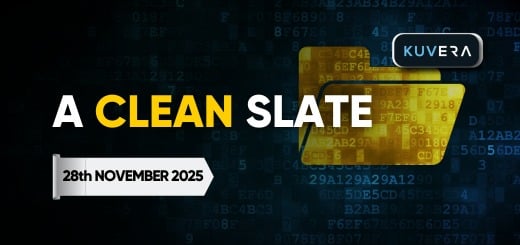
Earlier this month, India’s biggest paintmaker stunned the markets when it reported a 45% drop in quarterly profits and a 33% slump in consolidated earnings for the full year through March 2025.
Asian Paints, which was set up five years before India gained independence in 1947, blamed a weak demand environment for the poor performance that also showed in its revenue—sales fell 4.3% during the January-March quarter and slipped 4.5% for the full year. Worse, it said demand conditions were unlikely to improve anytime soon.
The company hadn’t seen such demand conditions in the industry over the “last two decades”, its CEO Amit Syngle said. “Currently, given the overall environment… (we) do not see acceleration in demand,” he added.
To be sure, Asian Paints has been disappointing the markets and investors for the past few quarters. Its shares have lost nearly a third of their value since September last year when the stock markets reached all-time highs. And the shares haven’t managed to recoup the losses even though the benchmark indexes are now just a shade away from the peak.
Still, the latest numbers and the CEO’s comments reflect a matter of serious concern—not just for the company itself but also for the entire paints industry as well as the broader economy.
Why is that, you may ask? Well, the paints industry’s performance directly correlates to the performance of a number of other sectors such as real estate and automotive. It also is linked directly to household consumption. So, if sales of houses or offices are slow or if people aren’t buying as many as cars and bikes than before or if households worried about stagnant wages are tightening their budgets, the paints industry is directly affected.
Asian Paints isn’t the only one facing the pinch. Smaller peer Kansai Nerolac Paints this week reported a 7% drop in fourth-quarter profit while revenue inched up 3%. Akzo Nobel India, the maker of Dulux paint, reported a 0.3% fall in quarterly profit while revenue rose only 5% and expenses increased by 6%. Berger Paints, the No.2 by market share, managed to beat expectations as quarterly profit jumped 18% and revenue climbed 7%.
Slowing demand isn’t the only problem that Asian Paints is facing. Its bigger headache is the rapid expansion of Grasim Industries, the textiles-to-chemicals arm of the Aditya Birla Group.
Grasim entered the paints sector in February 2024 under the Birla Opus brand. It aims to ramp up its revenue to Rs 10,000 crore by 2027 and take the No.2 spot from Berger. And it seems to be well on course to doing that.
Birla Opus has already gained a 6.8% share thanks to aggressive expansion that includes setting up factories, hiring executives and offering discounts to dealers. Meanwhile, Asian Paints’ market share dropped to 52% from 59% a year ago, Reuters reported this week, citing Elara Securities data.
And competition is set to intensify with another diversified conglomerate—JSW Group—seeking to expand quickly. The Sajjan Jindal-led group entered the sector in 2019 but is now pressing the pedal and is in the race to acquire Akzo Nobel India. A deal for the Dulux owner will help JSW Paints boost its market share and meet its target of Rs 5,000 crore for the current fiscal year from about Rs 2,000 crore in 2023-24. That would mean another headache for Asian Paints.

Taking Account
Asian Paints isn’t the only company under intense pressure. IndusInd Bank, India’s fifth-largest private-sector bank, has been grappling with one challenge after another for the past several weeks.
Last month, the lender disclosed derivatives loss of Rs 1,960 crore and admitted to accounting irregularities. This prompted the Reserve Bank of India to step in and forced CEO Sumant Kathpalia and deputy CEO Arun Khurana to step down. Last week, the bank all but admitted to violations of insider trading norms by Kathpalia and Khurana. It said that an independent review found issues that may need to be assessed from an “insider trading perspective”.
This week, more accounting irregularities came to light. The bank said an internal audit found that its microfinance arm incorrectly recorded Rs 674 crore as interest over three quarters of 2024-25. The amount was reversed on Jan. 10, 2025. The bank also found “unsubstantiated balances” of Rs 595 crore in its “other assets” accounts. This amount was set off against corresponding balances appearing in “other liabilities” accounts in January 2025.
IndusInd said it was taking steps to strengthen internal controls and fix accountability of the people responsible for the lapses in the microfinance business.
While IndusInd’s colour seems to be fading fast, another bank is getting back its lost colour.
Late last week, Sumitomo Mitsui Banking Corp agreed to buy a 20% stake in YES Bank for almost $1.5 billion. Japan’s second-biggest bank will buy the stake from State Bank of India and other lenders that had rescued YES Bank as part of an RBI-led restructuring in March 2020. The deal is a win-win. SBI and other lenders will get some of their money back, SMBC gets a big foothold in India’s banking sector, and YES Bank gets the backing of a strong shareholder.
Trump’s Cards
Talking about the changing colours, metaphorically speaking, US President Donald Trump said this week that India had offered a trade deal that proposed zero tariffs on American imports.
“It is very hard to sell in India, and they are offering us a deal where basically they are willing to literally charge us no tariffs,” Trump said in the Qatari capital Doha during his visit to the Middle East.
Trump has been putting pressure on India to reduce import duties even before he was reelected as president in November last year and even called the country a “tariff abuser”. Last month, Trump imposed a 26% reciprocal tariff on imports from India in addition to the 10% baseline tariffs imposed earlier. These were part of his broader strategy where he levied baseline and reciprocal tariffs on all of America’s trading partners on April 2, before hitting a pause on April 9.
India, like other countries, now has 90 days to stitch a trade deal with the US. India-US trade totalled about $129 billion in 2024, with India running a large surplus. While the Indian government hasn’t yet commented on an agreement, Trump’s statement—if true—would mark a dramatic change in bilateral trade ties.
Trump didn’t just stop at trade. He also chided Apple Inc for increasing iPhone manufacturing in India and said the Tim Cook-led American company should make more smartphones in its home country.
Apple has shifted some of its manufacturing from China to India and recently said it will make most of its iPhones sold in the US at Indian factories as part of a strategy to shield itself from potentially higher tariffs in China.
In fact, Apple’s growing manufacturing presence in India has been one of the rare success stories for the country. And it would be big loss for India if the company were to now change its plans under Trump’s pressure.
More Rate Cuts in Offing
Moving on to economic news, retail inflation in India cooled to a six-year low of 3.16% in April, largely due to a sharp drop in food prices. Core inflation, which excludes volatile components like food and fuel, also remained steady at 4.1%.
Vegetables and pulses were the key drivers pulling inflation down. Their decline brought food inflation down to 1.78% in April from 2.69% in March—the lowest level since October 2021.
Most experts believe inflation will remain benign through the rest of the calendar year, primarily supported by subdued food prices. The only upward pressure could come from gold, which has hit record highs amid geopolitical uncertainty. However, this turmoil—triggered by Trump’s reciprocal tariff regime—is also expected to have a deflationary effect on other commodities, especially crude oil.
This should help keep inflation below 4%, the RBI’s medium-term target, providing the central bank ample room for deeper rate cuts. The RBI had reduced the repo rate by 25 basis points each in February and April. Since then, inflation has eased further, and growth pressures have become more visible—just as the RBI had projected.
The central bank has shifted its policy stance to “accommodative” and has been injecting liquidity aggressively, maintaining surplus conditions in the system. With banks flush with funds, there is little excuse left to delay passing on rate cuts. In fact, there is growing chatter about banks frontloading rate transmission, as high-frequency indicators increasingly signal the need to support growth.
This was the last inflation print before the next meeting of the Monetary Policy Committee (MPC) in June, in which a rate cut is widely expected. Whether it will be a 25-bps cut or a 50-bps one is now the only question left.

Market Wrap
Benchmark Indian indices rose this week as investors welcomed a ceasefire with Pakistan and Trump’s comments on a possible trade deal with India. Expectations of a rate cut after inflation cooled also helped improve sentiment.
The Nifty 50 surged 4.2% for the week while the BSE Sensex gained 3.6%. The small-cap index soared 9.2% while mid-cap stocks surged 7.2% this week. The IT index jumped 5.8%, as concerns over a recession in the US abated.
Only three of the 30 Sensex and the 50 Nifty stocks ended in the red. These were IndusInd Bank, Bharti Airtel and Sun Pharma. IndusInd dropped as it disclosed more accounting issues while Airtel slipped after Singapore Telecom sold a 1.2% stake in the company for about $1.54 billion. Sun Pharma fell on worries about US tariffs.
State-run Bharat Electronics was the top gainer this week, surging 15% as investors lapped up stocks with exposure to the defence industry. Adani Enterprises was the next best performer. As many as eight companies, including Hero MotoCorp, Bajaj Auto, Jio Financial, Tata Steel and Trent, jumped between 8% and 12%.
Almost 15 Nifty companies, including index heavyweight Reliance Industries, recorded a gain of between 5% and 8%. This set also included Grasim, Adani Ports and IT companies Infosys, Wipro and HCL Technologies.
Earnings snapshot
- Bharti Airtel profit before exceptional items jumps 77% to Rs 5,223 crore
- Cipla consolidated net profit rises 30% to Rs 1,222 crore, beats estimates
- Tata Motors consolidated net profit slumps 51% to Rs 8,470 crore but tops expectations
- Hero MotoCorp profit up 6.4% at Rs 1,081 crore
- Tata Steel consolidated net profit more than doubles to Rs 1,301 crore, exceeds estimates
- Tata Power consolidated net profit climbs 16.5% to Rs 1,043 crore
- JSW Energy consolidated net profit up 16.1% at Rs 408 crore
- Muthoot Finance profit grows 22% to Rs 1,444 crore
- Royal Enfield bike maker Eicher’s profit revs up 27% to Rs 1,362 crore
- Shree Cement net profit drops 16% to Rs 556 crore
- Jockey India licensee Page Industries’ profit jumps 51.6% to Rs 164 crore, tops forecasts
- Hindustan Aeronautics consolidated profit falls 8% to Rs 3,977 crore
Other headlines
- Singapore Telecom sells 1.2% stake in Bharti Airtel for $1.54 billion
- India’s trade deficit widens to $26.42 billion in April from $21.54 billion in March as exports fall
- India’s unemployment rate for ages 15 and above at 5.1% in April: Govt data
- Fugitive Nirav Modi asks London court for bail pending extradition from UK to India
- Chivas Regal maker Pernod Ricard loses bid for New Delhi licence again
- Car sales to dealers rise nearly 4% in April to 348,847 units, shows SIAM data
- IREDA files bankruptcy case against Gensol Engineering in NCLT amid fraud allegations
- Govt okays semiconductor JV between HCL Group and Taiwan’s Foxconn
- MSCI adds Coromandel International, Nykaa to Global Standard index
- IT firm LTIMindtree lands its largest ever contract worth $450 million
That’s all for this week. Until next week, happy investing.
Interested in how we think about the markets?
Read more: Zen And The Art Of Investing
Watch here: Investing in International Markets
Start investing through a platform that brings goal planning and investing to your fingertips. Visit kuvera.in to discover Direct Plans and Fixed Deposits and start investing today. #MutualFundSahiHai #KuveraSabseSahiHai










